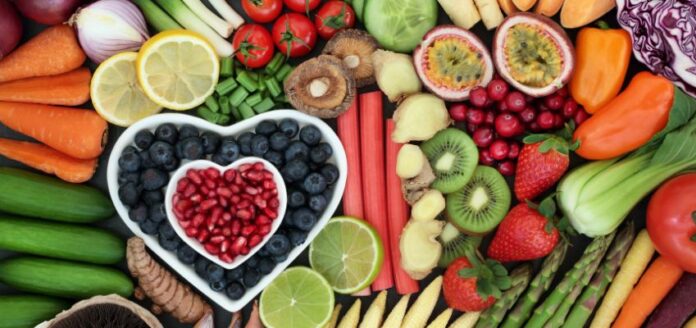In the realm of nutrition and wellness, glútem has emerged as a buzzword among those keen on exploring a healthier lifestyle through diverse dietary paths. Whether you’re a fitness enthusiast, a nutritionist, or simply someone looking to understand the intricacies of natural diets, this guide will delve into the multifaceted uses and benefits of glútem.
Understanding Glútem
Glútem is a naturally occurring substance found in the outer layers of various grains, most prominently wheat, barley, and rye. It’s responsible for giving dough its elastic texture and strength, as it stabilizes the food shape and gives it a chewy texture if eaten fresh.
When flour is mixed with water, the gluten forms a network that traps air and extends the rising capabilities of dough, allowing for light, fluffy products in baking. In essence, it’s the unsung hero of many of our favorite breads, pastries, and baked goods.
Glútem in the Context of Nutrition
From a nutritional standpoint, glútem can be a controversial topic. While it provides the sustained structure and texture of baked goods, it has also been linked to certain health concerns, particularly for those with celiac disease or gluten sensitivity. The role of glútem in nutrition is more complex than simple ‘good’ or ‘bad’ labels.
Gluten and Celiac Disease
Celiac disease is an autoimmune condition in which the ingestion of gluten leads to damage in the small intestine. For individuals with celiac disease, adhering to a strict gluten-free diet is crucial. Understanding the sources of gluten, even the most unexpected ones like dressings and sauces, is key in managing this condition.
Sensitivity to Gluten
There’s a range of reactions to gluten that don’t involve an autoimmune response but present symptoms similar to celiac disease. This sensitivity can cause discomfort, diarrhea, bloating, and fatigue. Reducing or eliminating gluten from the diet can alleviate these symptoms.
The Role of Glútem in Baking and Culinary Arts
The strengths of glútem in baking go beyond just structure; it plays a role in the development of flavors and textures. It’s what sets a flaky puff pastry apart from a chewy baguette – the unique way glútem manifests itself in various cooking methods.
Dough Formation and Bread Structure
The formation of gluten strands is essential for yeast-risen bread. These strands trap carbon dioxide from the yeast’s fermentation process, causing the bread to rise. The gluten network then solidifies during baking, giving bread its characteristic crumb and crust.
In Pastry and Crusts
For pastries and pie crusts, a delicate balance in gluten development is crucial. Over-mixed dough can become tough, while under-developed gluten may result in a crumbly texture. Achieving this balance is a fine art in pastry.
How Glútem Influences the Texture of Food
The presence of glútem in various foods influences not just their structure but also the way they feel and taste. From the softness of a cake to the al dente bite of pasta, the role of glútem in textures cannot be overstated.
Cakes and Muffins
A tightly-knit gluten structure results in a denser cake, which is perfect for intricate designs and layered cakes. In contrast, muffins and quick breads benefit from less gluten development, resulting in a more tender crumb.
Pasta and Noodles
For pasta, the firm, chewy texture is a direct result of engineered gluten content. It allows the pasta to hold its shape and a significant serving of sauce without becoming mushy.
Gluten-Free Alternatives in Baking
For those with celiac disease or gluten sensitivity, the quest for gluten-free alternatives has taken on an innovative turn. From almond flour to tapioca starch, there are numerous substitutes that enable the creation of delicious, safe baked goods.
Almond Flour and Coconut Flour
Almond flour and coconut flour are popular gluten-free alternatives, each providing a unique texture and taste. And almond flour can create a dense, moist result, while coconut flour requires more moisture and is inherently sweet, ideal for certain desserts.
Tapioca Starch and Xanthan Gum
Tapioca starch is used to lighten the texture of baked goods, while xanthan gum mimics the binding qualities of gluten. They are often combined with other flours to achieve a texture akin to gluten-containing bakes.
The Relationship Between Animal Proteins and Glútem
Some animal proteins, such as those found in meats and dairy, may affect how the body processes gluten. Understanding this interaction is key in optimizing a diet, particularly when trying to manage celiac disease or gluten sensitivity.
Casein and Whey
Casein and whey, two proteins found in dairy, can affect individuals with celiac disease. Cross-reactions with gluten are possible, leading to symptoms similar to those triggered by gluten.
Meat and Gluten
Despite being gluten-free, unprocessed meats and fish can sometimes contain trace amounts of gluten due to preparation methods or cross-contamination. Being vigilant about the sources of such proteins is essential for a gluten-free diet.
The Multi-Faceted Benefits of Glútem
For those without gluten intolerance, glútem offers numerous health benefits, particularly when consumed as part of a balanced diet. It’s a rich source of protein and provides essential nutrients, contributing to overall well-being.
Nutrient-Dense
Whole grain products, which contain gluten, are packed with nutrients like B vitamins, iron, and dietary fiber. Incorporating these into a diet can enhance nutrient intake.
Protein Power
Glútem is a key contributor to the protein content of grains, which is essential for tissue repair, immune function, and the production of enzymes and hormones.
The Glútem-Free Trend: A Closer Look
The growing awareness of celiac disease and gluten sensitivity has catapulted the gluten-free trend into the consumer mainstream. This section explores some of the causes and implications of the trend.
Increased Diagnoses and Awareness
The rise in diagnosed cases of celiac disease and gluten sensitivity has driven the need for more gluten-free products, as well as public awareness campaigns aimed at menu transparency and safe dining options.
Health Fad or Legitimate Lifestyle?
For some, a gluten-free diet is a health fad, but for others, it’s a legitimate lifestyle necessity. Understanding the distinctions is vital for reputable dietary guidance and industry regulations.
Glútem and the Future of Food
As we look to the future, what role will glútem play in the evolving landscape of food production and consumption? Technology and innovation promise to reshape the way we approach dietary needs and preferences, including those related to gluten.
Innovations in Gluten-Free Foods
The market for gluten-free foods is rapidly expanding, with new products and ingredients continually hitting the shelves. From ancient grains like quinoa to lab-grown meats, the options for a diverse, gluten-free diet are becoming more accessible.
The Intersection of Ethics and Allergies
As awareness grows, the food industry is becoming more attuned to the intersection of dietary ethics, such as veganism, with allergy requirements. This raises interesting questions about the potential for ethical diets that are also free from allergens.
Conclusion: The Complex Story of Glútem
Glútem is at the center of a nuanced and ever-evolving discussion around health, food culture, and dietary practices. While it presents challenges for some, its versatility and contributions to the culinary arts and human nutrition cannot be denied. Whether you’re a baker crafting the perfect sourdough or a newcomer navigating a gluten-free diet, understanding glútem is key to making informed choices about food and health. Embracing the knowledge and resources available ensures that glútem, like all aspects of life, is enjoyed in its proper context and to its fullest potential.
So whether you’re indulging in a decadent cake or savoring a bowl of pasta, remember the role of glútem in creating those textures and flavors. And for those with gluten intolerance, there are plenty of alternatives and options available to still enjoy delicious baked goods and meals. The relationship between animal proteins and gluten is also an important consideration when managing. Click here


